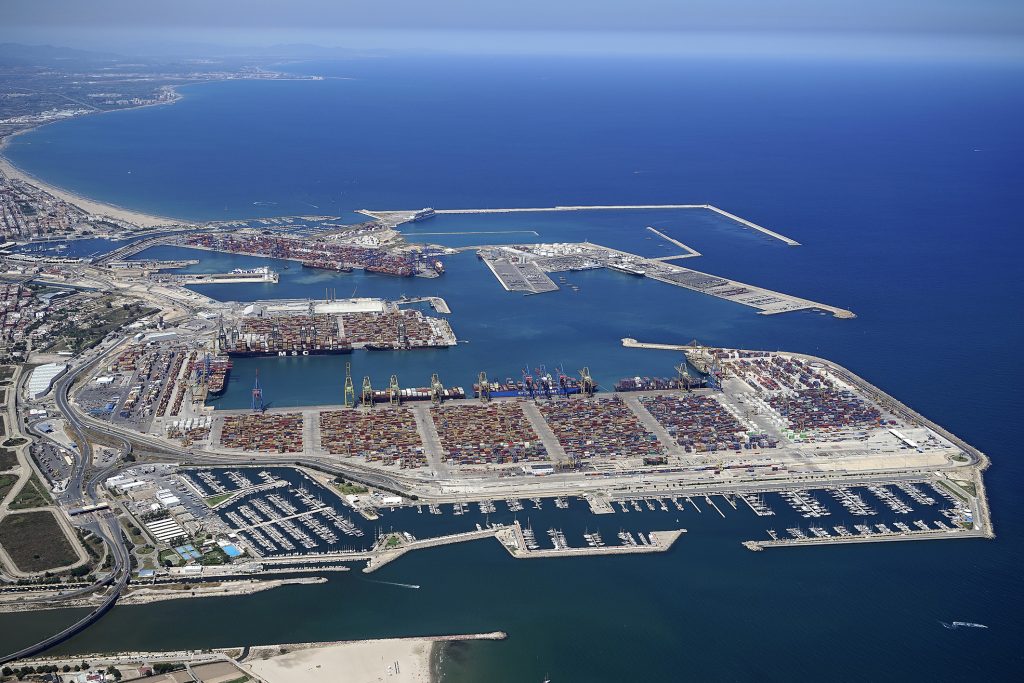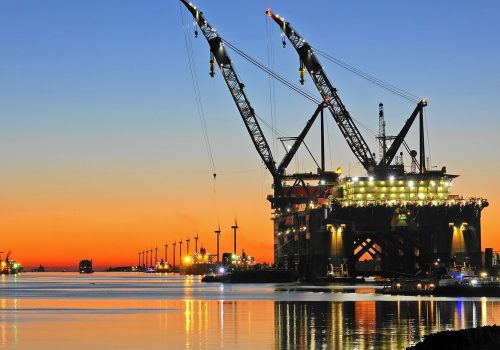Valencia, Spain: Decarbonization through innovative partnerships
As climate change has transitioned from abstract threat to tangible reality, cities have become increasingly aggressive in pursuing decarbonization solutions. By examining the decarbonization efforts of specific metropolitan areas as case studies, local, regional, and national leaders can gain a better understanding of what strategies might work in their own jurisdictions. This paper focuses on the decarbonization pathway of Valencia, Spain, a city of about eight hundred thousand inhabitants that is recognized as a global leader in sustainability.
Valencia has unique characteristics that shapes its efforts to lower its carbon footprint. The city has capitalized on the opportunities afforded by the compactness of its five-kilometer radius, and by a port with limited reach into the Spanish hinterland.
To decarbonize, Valencia is attempting to limit the use of personal cars; incentivize public transportation; improve energy efficiency in buildings; and use key technologies, such as hydrogen or ammonia, to reduce emissions of certain industrial sectors.
Similar to other cities that are working toward emissions reductions, Valencia faces obstacles to decarbonization that must be overcome. The primary challenges are related to measuring emissions, assigning responsibility for them, and incentivizing market actors to deploy capital for decarbonization. While every locale is unique, lessons learned from Valencia are likely to have great relevance for other cities looking to reduce emissions.
Valencia’s carbon footprint
Valencia is a unique city with a distinctive carbon profile. This Mediterranean city is one of Europe’s top tourist destinations; it’s also a major maritime transit hub. In 2021, the city hosted approximately 3.25 million overnight stays, down from pre-pandemic levels, but up by 90 percent compared to 2020.1“Tourism Statistics,” Visit Valencia, 2021, https://fundacion.visitvalencia.com/sites/default/files/media/downloadable-file/files/Estadisticas-turistas-2021.pdf. Moreover, Valencia’s port handled 5.6 million twenty-foot equivalent unit (TEU) containers, or a little less than 6 percent of all European containers, while serving nearly 7,300 vessels.2“Container Port Traffic (TEU: 20 Foot Equivalent Units)—European Union,” World Bank, last visited December 6, 2022, https://data.worldbank.org/indicator/IS.SHP.GOOD.TU?locations=EU; “Statistical Report,” Port Authority of Valencia, December 2021, https://www.valenciaport.com/wp-content/uploads/2112-Statistical-Report-December-2021.pdf.
As shown in Figure 1, Valencia’s carbon emissions largely result from energy (excluding transportation) and transport, with these two categories contributing to 82 percent of the city’s emissions. Industrial processes add another 9 percent.
While industrial decarbonization is of critical importance for Europe, industry plays a smaller role in Valencia city’s direct emissions compared to industrial emissions in the surrounding region. Valencia region, rather than Valencia city, contains the bulk of industry in the area. Of this sector, the most important from an emissions standpoint are the ceramics and refineries industries, which are highly complex industries to decarbonize. The Valencia region’s high solar insolation is a contributing factor in the public and private sectors’ interest in commercial development of green hydrogen as a fuel source for the region’s industries and tourism sector, in particular, as a feedstock for sustainable aviation fuels. The Port of Valencia, which is owned by the national government, measures its carbon footprint by evaluating the amount of carbon emissions per ton of shipments handled.3“About Us,” Government of Spain, last visited December 6, 2022, https://www.puertos.es/en-us/nosotrospuertos#:~:text=The%20State%2Downed%20 Spanish%20Port,for%20implementing%20the%20government%27s%20port.
Valencia’s decarbonization strategy
Efforts to decarbonize Valencia involve strategies to tackle both the city’s primary contributors to carbon emissions and the region’s industrial emissions. The planned tactics are necessarily diverse in approach, interconnected, and inclusive, with stakeholders from the community, businesses, and organizations taking part in the conversation.
Valencia City
Since 2015, Valencia’s city government has emphasized sustainability and decarbonization through public engagement and innovative policy. In 2019, the city government coalesced various existing efforts under a vision document called “Missions Valencia 2030,” and shortly thereafter generated a climate-centric vision document, “Valencia 2030 Climate Mission.”4“Missions Valencia 2030,” Missions Valencia EU, last visited December 6, 2022, https://www.missionsvalencia.eu/?lang=en. In 2022, the city also released a “Valencia 2030 Urban Strategy,” designed to be a roadmap and tool for the city to achieve its goals, decarbonization included.5“The Strategy,” Valencia 2030+ Estrategia Urbana, last visited December 6, 2022, https://estrategiaurbanavlc2030.es/thestrategy/. These documents reflect the city government’s broader attempts to make Valencia a sustainability leader, including a history of meeting regularly with stakeholders across society (citizens, universities, business, etc.) to focus on urban decarbonization solutions. Its work has paid off: Valencia was chosen as the World Design Capital for 2022, which recognizes sustainable urban design, and the European Union has just given Valencia its European Green Capital award for 2024.6“Valencia, Elsinore and Velenje Win 2024 European Green City Awards,” European Commission, October 28, 2022, https://environment.ec.europa.eu/news/valencia-elsinore-and-velenje-win-2024-european-green-city-awards-2022-10-28_en.
Valencia city’s decarbonization efforts can be grouped into four pillars, which were stressed in Valencia’s European Green Capital application: energy efficiency, renewable energy, green infrastructure, and mobility.7Tzvetozar Vincent Iolov, “Valencia Is the 2024 European Green Capital,” Mayor EU, October 27, 2022, https://www.themayor.eu/en/a/view/valencia-is-the-2024-european-green-capital-11155. Each is designed to take advantage of and to preserve Valencia’s urban morphology: compact, dense, historic, and mixed use. All also are logically linked one to each other.
To achieve greater energy efficiency and deploy renewable energy, the city government sees an opportunity in upgrading the built environment. Valencia’s many flat roofs hold promise for rooftop solar, while the same aging buildings could be refurbished with energy-efficiency improvements. Valencia Climate and Energy, a municipal foundation, provides advice, training, and assistance on both fronts.8“What Is It?” Valencia Clima i Energia, last visited December 6, 2022, https://climaienergia.com/es.
For increasing climate-friendly infrastructure, the city has committed to preserving and even expanding a green belt, primarily farmland, that surrounds the city as part of a strategy to boost consumption of locally grown foods. Local stakeholders conveyed to the authors that Valencia faces a tradeoff between a desire to preserve the green belt’s primary function, which is to grow food for local consumption, and the need to find suitable surface areas for renewable energy production, specifically solar photovoltaics. Currently, the city’s preference is clearly toward landscape preservation.
The mobility pillar, specifically an emphasis upon switching from private automobile use to the “green” modes (walking, bicycling, and public transit), is the focus of much of Valencia’s decarbonization efforts. The city already has an edge on this front. Because it is a dense, flat city with a relatively small radius of five kilometers, Valencia is highly walkable and bikeable. Valencia also has few natural barriers, such as rivers, that would otherwise increase distances for pedestrians and cyclists. To further encourage walking and cycling, the city provides real-time traffic information via AppValencia, empties urban waste containers more frequently to make walking more desirable, and invests heavily in cycling-friendly infrastructure, such as bike lanes.9“Valencia Invests to Become a Smart City,” Euro Cities, March 2, 2022, https://eurocities.eu/stories/valencia-invests-to-become-a-smart-city. Valencia stakeholders who were interviewed by the authors report that although Valencia’s residents at first were resistant to these changes—in particular, bike lanes and cycling—they now embrace them.
In addition to creating a more pedestrian- and bike-friendly environment, the city continues to build on its public-transit strategy. Over recent decades, the city has overseen substantial improvements to its metro system. The investments are already paying dividends, with ten lines in service and one hundred and thirty-eight stations servicing one hundred and fifty-six kilometers of network.10“Historical Evolution Metrovalencia,” Generalitat Valenciana, last visited December 6, 2022, https://www.fgv.es/conoce-fgv/fgv-en-cifras/metrovalencia-en-cifras/evolucion-historica. Although Valencia, like other cities, is facing declining passenger volumes in the post-COVID era, the city remains committed to public transit.11“Metrovalencia Reaches 69.4 Million Passengers in 2019, the ‘Highest Figure in Its History,” Valencia Plaza, January 18, 2020, https://valenciaplaza.com/metrovalencia-alcanza-los-69-4-millones-de-viajeros-en-2019-la-cifra-mas-alta-de-su-historia. Metrovalencia has invested 235 million euros to improve the frequency of trains.12“FGV Presents the Plan to Improve Metrovalencia’s Tran Frequency with an Investment of 235 Million Euros,” Generalitat Valenciana, February 9, 2021, https://www.fgv.es/fgv-presents-the-plan-to-improve-metrovalencias-train-frequency-with-an-investment-of-235-million-euros/?lang=en. Some areas will see an average frequency of 7.5 minutes, down from the current ten to twenty minutes.13“FGV Presents the Plan: AppValencia,” Valencia City Council, last visited December 6, 2022, https://www.valencia.es/appvalencia/. AppValencia, a city-financed initiative, provides real-time information to users, encouraging mode switching.

Credit: Valenciaport
Valencia region and port
The Valencia region’s industrial decarbonization efforts, focused on ceramics and refining, are linked to the deployment of green hydrogen. Energy firms BP and Iberdrola are studying the feasibility of building the Valencia region’s largest green hydrogen plant for supply to BP’s Castellón refinery.14Pekic, Sanja. “Iberdrola and BP Partner up on Green Hydrogen Production.” Offshore Energy, July 28, 2022. https://www.offshore-energy.biz/iberdrola-and-bp-partner-up-on-green-hydrogen-production/. Because refineries already use grey hydrogen (produced from natural gas), using green hydrogen would significantly lower industrial carbon output. Renewables-powered green hydrogen could quickly become a reality in this region, given excellent solar-generation capacity and even greater potential for even more capacity. Spain is Europe’s leader in green hydrogen and produces almost no natural gas.. Potential linkages with Morocco as an emerging green hydrogen export market further enhance the viability of this strategy. In addition to using green hydrogen via imports or indigenous production, Valencia may be able to access blue hydrogen from North African producers, such as Algeria.
Valencia port has made considerable progress in reducing the carbon intensity of its handling activities, as emissions fell from 3.19 kilograms (kg) of CO2 per ton handled in 2008 to 2.23 kg per ton in 2019.15“The Port of Valencia Reduces Its Carbon Footprint by 30%,” Valenciaport, April 12, 2021, https://www.valenciaport.com/en/the-port-of-valencia-reduces-its-carbon-footprint-by-30. Fundación Valenciaport, the port authority’s research and innovation arm, has been a local leader in creating energy-efficiency and alternative-energy programs.16“Sustainability and Energy Transition,” Fundacion Valenciaport, last visited December 6, 2022, https://www.fundacion.valenciaport.com/en/projects/sustainability-and-energy-transition. Deep decarbonization of port activities will require the deployment and scaling of new technologies, such as ammonia for maritime transport and zero-carbon fuels for port operations.
The Valencia region, city government, port authority, private companies, and universities have been exploring ways to develop a local “hydrogen valley,” similar to those emerging across Europe (including elsewhere in Spain), to catalyze green hydrogen development through clustering supply and demand.17“Hydrogen Valleys,” Clean Hydrogen Partnership, last visited December 6, 2022, https://h2v.eu/hydrogen-valleys. In October 2021, Fundacion Valenciaport, the city, and regional entities led a proposal, dubbed “H2VLC Valencia Hydrogen Valley,” with the support of private-sector companies and academic research centers, to organize pilot projects in green hydrogen.18“Promoting Hydrogen in Valencia,” European Network of Logistics Competence Centers, January 14, 2022, https://www.openenlocc.net/promoting-hydrogen-in-valencia.
Remaining challenges
Despite Valencia’s impressive successes, significant challenges remain. The city’s decarbonization efforts are subject to larger market forces. Renewables and other forms of clean generation, clean hydrogen for industrial use, and clean maritime shipping will all require multilateral solutions extending well beyond Valencia’s borders.
To continue momentum for Valencia’s decarbonization, city and regional leaders should focus on several priorities. First, the region, port, city, and private sector should strengthen their commitments to developing Valencia’s green hydrogen capabilities, given the region’s massive potential as a hub for this fuel. Second, the city should continue to prioritize its emphasis on buildings, through improving the energy efficiency of aging buildings, ensuring new construction meets high energy-efficiency standards, and prioritizing rooftop solar. Finally, the city and regional governments should continue to strengthen the connections between their decarbonization agendas and positive economic, social, and environmental transformation. Green hydrogen production, renewable energy programs, building efficiency programs, bicycling and transit investments, sustainable tourism, and more should continue to be part of a green and prosperous Valencia. One question that remains to be answered is whether the “green belt” surrounding the city should continue to be reserved primarily for food production (a substantial point of pride for the city) or if parts of it should be devoted to large-scale solar generation, which would immediately reduce the city’s emissions.
Despite the challenges Valencia faces in achieving its objectives, the odds favor continued progress. Valencia stakeholders interviewed by the authors were confident that the city’s political preconditions to implement swift transition policies will remain in place. Their argument is that the green transition is politically sustainable, given voter sentiment and increasing local evidence of climate change (hotter summers, in particular). For these reasons, although the political parties governing the region and city are not the same, the governments have not clashed on key policy questions. Whether this situation holds indefinitely will determine the extent to which Valencia’s leaders can realize their ambitious decarbonization goals for 2030 and beyond.
AUTHORS
ACKNOWLEDGMENTS
The Atlantic Council would like to thank BP for its support of this project.
This issue brief was written and published in accordance with the Atlantic Council Policy on intellectual independence. The authors are solely responsible for its analysis and recommendations. The Atlantic Council and its donors do not determine, nor do they necessarily endorse or advocate for, any of this issue brief’s conclusions.
The authors would like to thank Maia Sparkman, Elina Carpen, and Visit València Foundation for their assistance with this project. In addition, they would like to recognize workshop participants whose contributions helped inform this paper. The participants include the following:
- Raul Cascajo Jimenez, Climate & Energy Committee, Valencia Port Authority
- Debora Domingo Calabuig, Vice-rector for Sustainable Development of Campus, Universitat Politecnica de Valencia
- María Vicente Gil Vila, Conselleria of Mobility, Generalitat Valencia
- Juan Manuel Diez Orejas, Corporate Planning & Control, Port Authority of Valencia
- Jaume Mata, Head of Sustainable Tourism, Visit Valencia
- Carla Isabel Montagud Montalva, Director of the Chair, Energy Transition in Cities; Deputy Director, Sustainable Development, School of Industrial Engineering, Universidad Politécnica de Valencia
- Josep Sanz Argent, R&D – Energy Transition, Fundación Valenciaport
- Jose Villalba, Head of Climate Emergency Service & Energy Transition, City Council, Valencia
RELATED CONTENT

The Global Energy Center develops and promotes pragmatic and nonpartisan policy solutions designed to advance global energy security, enhance economic opportunity, and accelerate pathways to net-zero emissions.


